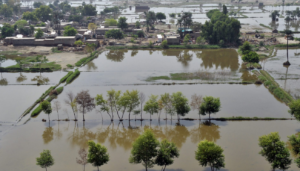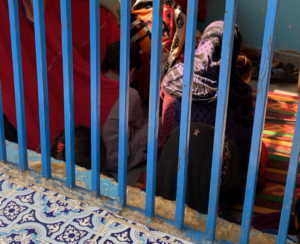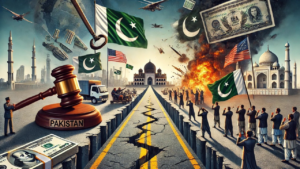
For a country teetering on the edge of economic instability, Pakistan’s repeated delays in implementing privatisation reforms are more than just bureaucratic inertia—they are a symptom of deeper structural dysfunctions and political evasiveness.
Despite urgent calls from international financial institutions, repeated bailouts from the International Monetary Fund (IMF), and dwindling public resources, the Pakistani state continues to drag its feet on divesting from loss-making state-owned enterprises (SOEs) that have long burdened the national exchequer.
Privatisation has been part of Pakistan’s official economic vocabulary for decades.
Yet successive governments, regardless of party or ideology, have failed to convert this rhetoric into meaningful action.
While economic crises mount, inflation soars, and debt repayments loom, Islamabad clings to inefficient state control in sectors ranging from power and steel to aviation and railways—choices that are increasingly untenable in today’s economic climate.
A legacy of paralysis
Pakistan’s privatisation ambitions date back to the 1990s, when liberalisation was touted as the gateway to foreign investment and economic efficiency.
But decades later, most of the flagship enterprises earmarked for privatisation remain firmly under state control.
Pakistan International Airlines (PIA), Pakistan Steel Mills (PSM), and numerous public utilities continue to incur massive annual losses. These are not simply inefficient entities—they are fiscal sinkholes.
PIA alone, with its spiralling debt and frequent flight disruptions, remains emblematic of the state’s failed stewardship.
Once the pride of South Asia’s aviation sector, PIA has become a case study in how overstaffing, mismanagement, and political patronage can turn a national asset into a perpetual liability.
Yet despite acknowledging its unsustainable structure, successive governments have shied away from serious reform or divestment, fearing political backlash from powerful labour unions and the public sector bureaucracy.
The same inertia plagues other sectors.
Pakistan Railways continues to haemorrhage funds while delivering substandard service.
PSM has remained non-operational for years, costing billions in taxpayer money.
The power sector is riddled with circular debt, unpaid dues, and corruption.
The reality is that these enterprises are not only economically burdensome—they are actively impeding growth and crowding out private investment.
IMF pressures and broken promises
The reluctance to privatise comes despite repeated pressure from the IMF, which has bailed Pakistan out over two dozen times since the 1980s.
In every loan agreement, structural reforms—particularly privatisation—are a central condition. Yet, time and again, those commitments are either delayed, diluted, or derailed entirely.
In the bailout deal in 2023, the IMF demanded urgent fiscal consolidation, which included divesting from non-performing SOEs.
The Pakistani government, then under Shehbaz Sharif’s leadership, nodded in agreement and produced a familiar roadmap: commissions, committees, and timelines.
But a year on, little has changed on the ground. Analysts widely view these reform pledges as performative exercises designed more to unlock tranches of IMF funding than to implement real change.
This chronic non-compliance has consequences.
Each missed benchmark not only jeopardises future funding but also erodes international confidence in Pakistan’s economic management.
Investor sentiment, already fragile, is further weakened by the unpredictability and opacity that surrounds the country’s privatisation process.
Political risk aversion and short-termism
At the heart of the problem lies a political class that consistently opts for short-term stability over long-term reform.
Privatisation, especially in a country like Pakistan with strong populist undercurrents, is politically toxic.
Labour unions resist it vehemently, viewing it as a threat to jobs. Opposition parties weaponise it as a talking point, accusing ruling coalitions of “selling off national assets.”
Civil society often views it with suspicion, associating it with corruption and foreign exploitation.
Rather than confronting these narratives, Pakistan’s politicians have chosen avoidance.
Even when presented with undeniable financial data showcasing the inefficiency and cost of state-run enterprises, leaders from across the spectrum continue to baulk at taking definitive action.
The result is a deeply entrenched culture of risk aversion and a policymaking process that prizes survival over sustainability.
Moreover, privatisation in Pakistan is marred by a history of opacity and scandal, further complicating public perception.
Earlier privatisation attempts—in sectors like banking and telecommunications—though economically beneficial in hindsight, were mired in accusations of undervaluation and cronyism.
This legacy of mistrust still haunts current efforts, making any future initiative politically vulnerable even before it begins.
Economic strain reaches a boiling point
Meanwhile, the broader economic indicators paint an alarming picture.
Inflation has remained in double digits, with food prices pushing many below the poverty line.
The Pakistani rupee has lost significant value against the dollar. Foreign reserves remain precariously low, and debt servicing now consumes a major portion of national revenues.
In this context, continuing to subsidise failing SOEs becomes increasingly irrational.
Each rupee spent propping up PIA or Pakistan Railways is a rupee not spent on education, healthcare, or infrastructure.
The trade-offs are no longer abstract—they are daily realities for millions of Pakistanis.
Hospitals without medicine, schools without teachers, and power outages in industrial zones are the lived consequences of an unsustainable economic model.
Foreign investors, once cautiously optimistic about Pakistan’s potential, have grown increasingly sceptical.
The country’s failure to deliver on key reforms—especially privatisation—has left many reluctant to commit capital.
Even local businesses suffer under the weight of a sluggish and distorted market where public monopolies continue to crowd out private innovation.
A ticking clock
The cost of inaction is no longer theoretical. As economic pressures intensify, time is running out for Islamabad to correct course.
Yet, instead of urgency, what persists is a political culture that prioritises expediency over reform.
The temptation to paper over structural weaknesses with new loans, temporary subsidies, or public-relations campaigns remains dominant.
The longer Pakistan delays meaningful privatisation, the more painful the eventual reckoning will be.
SOEs will continue to drain public resources. Investor confidence will continue to erode. And the economy will remain in a cycle of crisis, bailout, and relapse—a loop that has defined much of Pakistan’s post-liberalisation economic history.
The rhetoric of reform still echoes in official statements, budget speeches, and policy documents.
But the gap between words and action has rarely felt so wide.
Until that gap is bridged—not with plans, but with execution—Pakistan will remain trapped in an economic holding pattern, unable to move forward yet increasingly incapable of standing still. The stakes could not be higher. Privatisation may not be a panacea, but the refusal to even attempt it has become a national liability. And as the pressure mounts from international lenders, domestic stakeholders, and a weary public, Islamabad’s continued hesitation could soon turn from costly to catastrophic.






